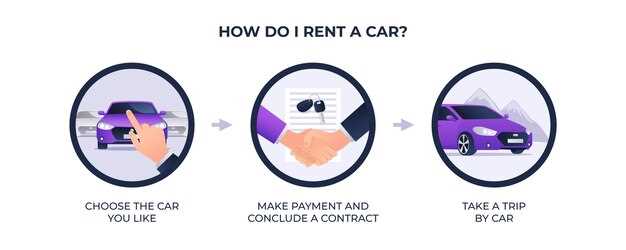
Investing in a repossessed vehicle can be a tempting option for budget-conscious buyers looking for great deals. These repo cars, often sold at significantly lower prices compared to their market value, provide an opportunity for individuals to own a reliable vehicle without breaking the bank. However, it is crucial to understand both the advantages and disadvantages associated with this purchasing route before making a decision.
On one hand, the primary benefit of buying a repossessed vehicle lies in the potential for substantial savings. Many repossessed cars are sold at auctions or through financial institutions eager to recoup losses, allowing savvy shoppers to score impressive deals. Additionally, these vehicles are often newer models with lower mileage, providing an attractive option for those seeking a dependable ride.
Conversely, there are notable drawbacks to consider when it comes to repo vehicles. Buyers may encounter hidden issues with the car’s maintenance history or physical condition, which can lead to unexpected repair costs down the line. Furthermore, the emotional weight of a repo car’s past can be burdensome for some, as these vehicles are often tied to financial distress for their previous owners. Careful research and consideration are essential when navigating this unique market.
Understanding the Potential Cost Savings of Repo Cars

Buying repo cars can lead to significant financial benefits for budget-conscious consumers. Repossessed vehicles are typically sold at a fraction of their original value, providing opportunities to secure great deals. Financial institutions and dealerships often auction these cars to recover lost funds, making them available at reduced prices.
One of the primary advantages of purchasing repo cars is the potential for lower upfront costs. These vehicles are usually priced below market value, allowing buyers to save money compared to purchasing a similar model from a conventional dealership. Moreover, even if some minor repairs are required, the overall expenditure can still fall well within budget compared to other vehicles.
Additionally, repo cars might come with less depreciation risk. Since they are already priced low, buyers often face a smaller loss in value over time. This means that the investment in a repo vehicle may hold steady more effectively than a new car, which loses value rapidly upon leaving the lot.
Another area of savings pertains to insurance costs. Repo cars, generally being older models or less-desirable makes and trims, can result in lower premiums when compared to new vehicles. This ongoing reduction in insurance expenses can further enhance the overall value proposition of buying a repossessed car.
In summary, the potential cost savings of repo cars can be substantial. From lower purchase prices and reduced depreciation to more affordable insurance, buyers have the opportunity to capitalize on deals that might not be available through traditional avenues. Careful consideration and research can further enhance the financial benefits of investing in repossessed vehicles.
Evaluating the Risks Involved in Purchasing Repossessed Vehicles
Buying repossessed cars can lead to significant savings, but it also comes with several risks that potential buyers must carefully evaluate. First and foremost, vehicle condition is a primary concern. Repo cars are often sold as-is, meaning there may be hidden issues that could require costly repairs. A thorough inspection and, if possible, a test drive are essential steps to determine the car’s actual condition.
Another risk involves title complications. In some cases, the title may not be clear due to prior liens or other legal disputes. This can complicate the ownership transfer and may even result in legal troubles for the new owner. Buyers should always ensure that the title is free and clear before making a purchase.
Limited history is another factor to consider. Repo cars may not come with a complete maintenance record, making it difficult for buyers to assess how well the vehicle was cared for. This lack of transparency can lead to unexpected maintenance costs down the line.
Additionally, repo deals are typically sold at auctions where bidding can escalate quickly. This competitive environment might push buyers to pay more than they initially planned, negating the potential savings that attracted them to the deal in the first place.
Finally, financing challenges can arise when purchasing a repossessed vehicle. Some lenders may hesitate to finance a repo car due to its uncertain history, which can limit options for buyers who need assistance with funding.
In conclusion, while buying repossessed vehicles may offer attractive prices, it is vital for buyers to assess these risks thoroughly. Understanding what to look out for can help ensure the purchase is a wise investment rather than a costly mistake.
Steps to Take When Inspecting and Buying Repo Cars

Purchasing repo cars can be a cost-effective option, but it requires careful consideration and thorough inspection. Here are the essential steps to follow when inspecting and buying repossessed vehicles.
1. Research the Repo Car Availability: Start by identifying reputable sources for repo cars, such as bank auctions, online marketplaces, or government auctions. Gather information about the types of cars available and their history.
2. Review the Vehicle History Report: Obtain a vehicle history report using the car’s VIN. This report will provide crucial information such as previous accidents, title status, and any outstanding liens that may affect ownership.
3. Inspect the Car Thoroughly: Before finalizing your purchase, conduct a comprehensive inspection. Look for signs of damage, rust, or unusual wear. Pay attention to the engine, brakes, tires, and interior condition. If you lack expertise, consider hiring a mechanic to assess the car.
4. Test Drive the Repo Car: Test driving is vital to understand the car’s handling, comfort, and overall performance. Pay attention to any unusual noises or warning lights that may indicate underlying issues.
5. Verify Ownership and Title: Ensure that the seller has the legal right to sell the car. Confirm that the title is clear and free of any liens. This step is crucial to avoid legal complications in the future.
6. Determine the Fair Market Value: Research the market value of similar cars to ensure you are paying a fair price. Consider factors like mileage, condition, and any included warranties or guarantees.
7. Be Prepared for Additional Costs: Factor in additional expenses such as registration fees, taxes, and potential repairs. A repo car may require unexpected maintenance, so set aside a budget for these costs.
8. Negotiate the Price: If everything checks out, don’t hesitate to negotiate. Use your research to support your offer and aim for a price that reflects the car’s condition and market value.
9. Finalize the Transaction: Once you agree on a price, complete the necessary paperwork. Ensure that you have all required documents and that the seller provides a bill of sale. This step protects your rights as the new owner.
10. Follow Up After Purchase: After buying the repo car, consider a thorough inspection and service from a trusted mechanic. Regular maintenance will ensure the vehicle remains in good condition and performs reliably.




